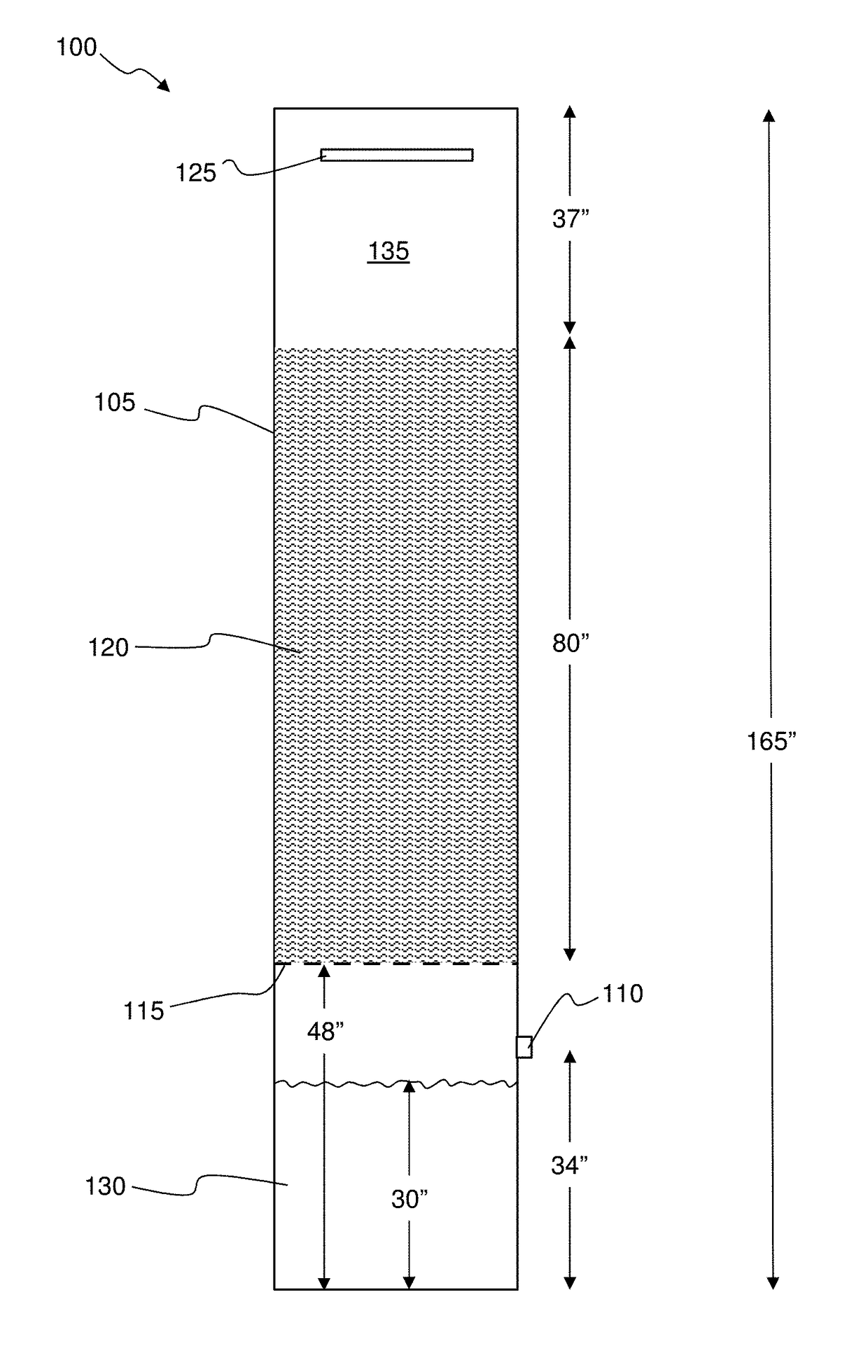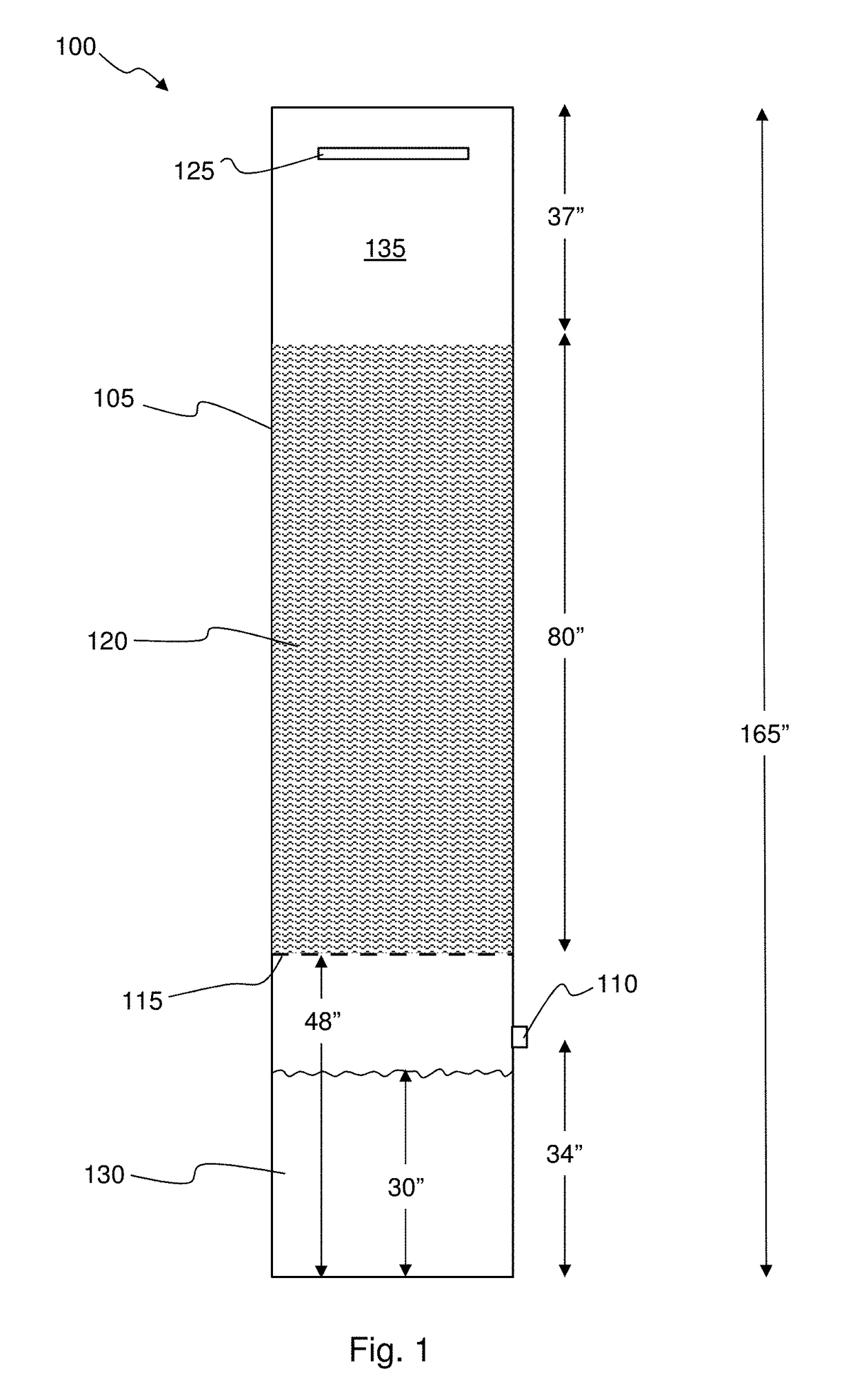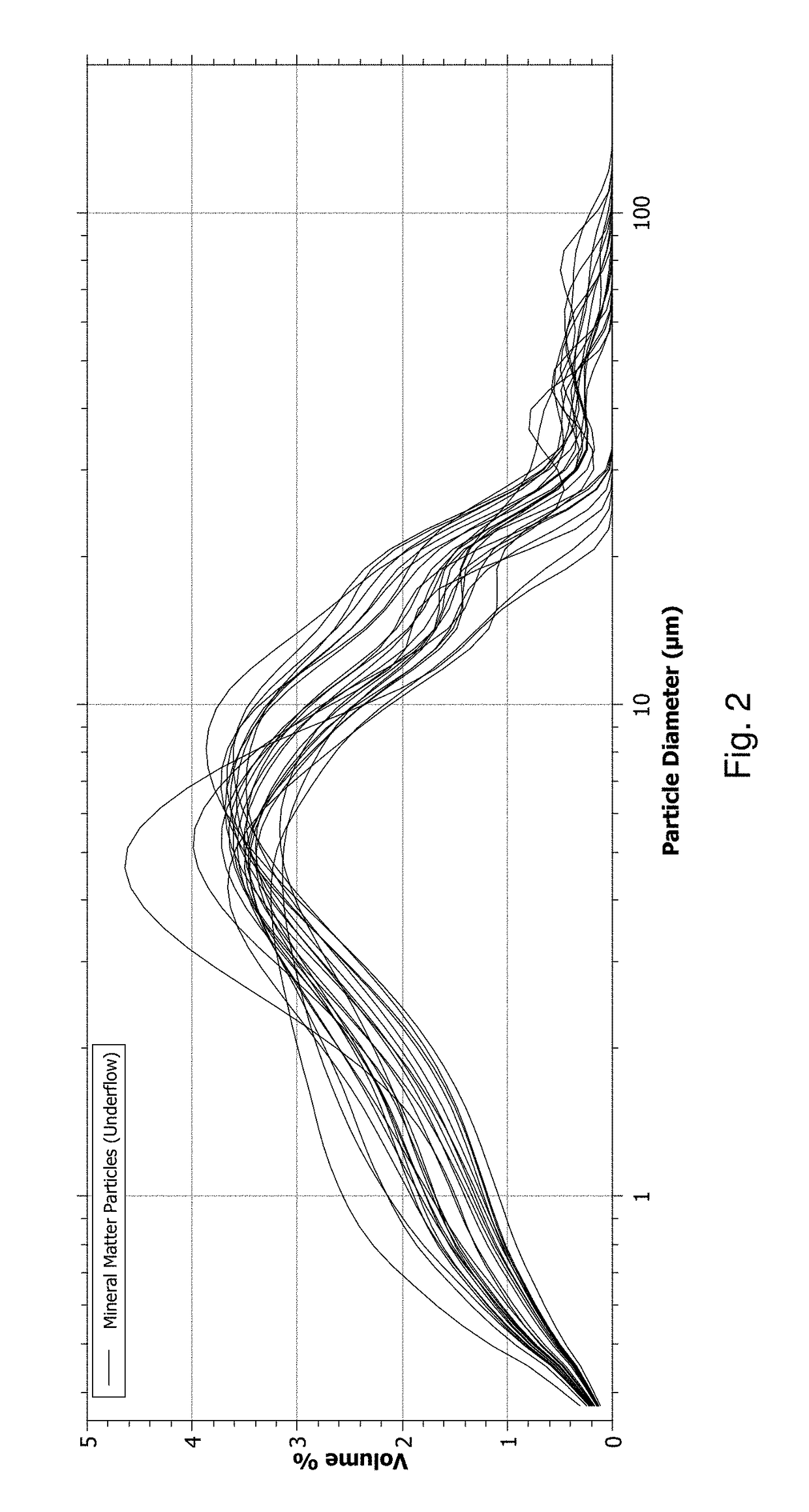Combustion gas removal from flue gas using coal derived mineral matter
a technology of combustion gas and flue gas, which is applied in the direction of gas treatment, dispersed particle separation, separation processes, etc., can solve the problems of undesirable combustion gas emission of nox and undesirable combustion gas emission of sox, and achieve the effect of increasing the reactive surface area and improving the reaction ra
- Summary
- Abstract
- Description
- Claims
- Application Information
AI Technical Summary
Benefits of technology
Problems solved by technology
Method used
Image
Examples
example 1
[0028]FIG. 1 illustrates one experimental setup 100 used to demonstrate the effectiveness of the disclosed invention. An 18 inch (0.46 m) diameter by 165 inch (4.2 m) tall column 105 was used. A 3 inch (0.76 m) diameter flue gas inlet pipe 110 was centered at 34 inches (0.86 m) from the bottom of the column. A wire mesh 115 was installed 48 inches (1.22 m) from the bottom of the column. The next 80 inches (2.03 m) of space in the column was filled with 1.25 inch (0.032 m) diameter bioballs 120. Bioballs are commercially available, fluted polymer spheres that serve to dramatically increase surface area within a volume of space. The remaining 37 inches (0.94 m) of column height was empty. A liquid shower manifold 125 was installed at the top of the column to enable the liquid being tested to be introduced into the column. In this example, the liquid included water, water with 8 wt. % solids suspended coal derived mineral matter, and water+0.1M NaOH.
[0029]The test liquid 130 filled the...
example 2
[0038]FIG. 3 is a schematic 300 showing one manner in which coal derived mineral matter (CDMM) may be used to remove combustion gas emissions in a flue gas produced by a process that dries coal pellets. The hot flue gas 305 containing combustion gas emissions from a combustor unit 310 passes through the thermal reactor 315 in a co-flow direction with coal pellets 320 to thermally remove water from the coal pellets. Fuel 325 and air 330 are introduced into the combustor unit and combusted to form the hot flue gas 305 containing combustion gas emissions. Within the thermal reactor 315, the temperature of the hot flue gas quickly falls to about 100° C. as water is converted from a liquid phase in the coal pellets to a vapor phase and transported away from the pellets with the flow of flue gas through the coal pellets. Dried coal pellets 330 are discharged at the bottom of the thermal reactor 315.
[0039]Moist flue gas 335 from the thermal reactor 315 is ducted into the bottom of one or m...
example 3
[0044]This example will illustrate chemical pathways for conversion of SOx, NOx, and CO to soluble and insoluble sulfate, nitrate, and carbonate ionic salts. Similarly, sulfite and nitrite ionic salts can also form. In the example reaction pathways, metal oxides and metal carbonates are the reactant with the gas species to convert them to ionic salts that remain either in the coal derived mineral matter dried particulate solids or the clarified water. Metal oxides can also act as reactants along with SOx, NOx, and CO to convert them to soluble and insoluble ionic salts.
[0045]The following are example SOx reactions to form sulfate ion, SO42− ion (soluble sulfate salts).
SO2(g)+1 / 2O2(g)→SO3(g)
SO3(g)+MCO3(sol)→MSO4(sol)+CO2(g)
or
SO3(g)+MO(sol)→MSO4(sol)+O2(g)
[0046]Where M=Cationic metal (Ca2+, K+, Mg2+, Fe2+ / 3+, etc.); MO=Metal oxide; SO42−=Sulfate ion; (g)=gas; (sol)=in solution. It is understood that the stoichiometry of the foregoing reactions will vary depending upon the valence o...
PUM
 Login to View More
Login to View More Abstract
Description
Claims
Application Information
 Login to View More
Login to View More - R&D
- Intellectual Property
- Life Sciences
- Materials
- Tech Scout
- Unparalleled Data Quality
- Higher Quality Content
- 60% Fewer Hallucinations
Browse by: Latest US Patents, China's latest patents, Technical Efficacy Thesaurus, Application Domain, Technology Topic, Popular Technical Reports.
© 2025 PatSnap. All rights reserved.Legal|Privacy policy|Modern Slavery Act Transparency Statement|Sitemap|About US| Contact US: help@patsnap.com



